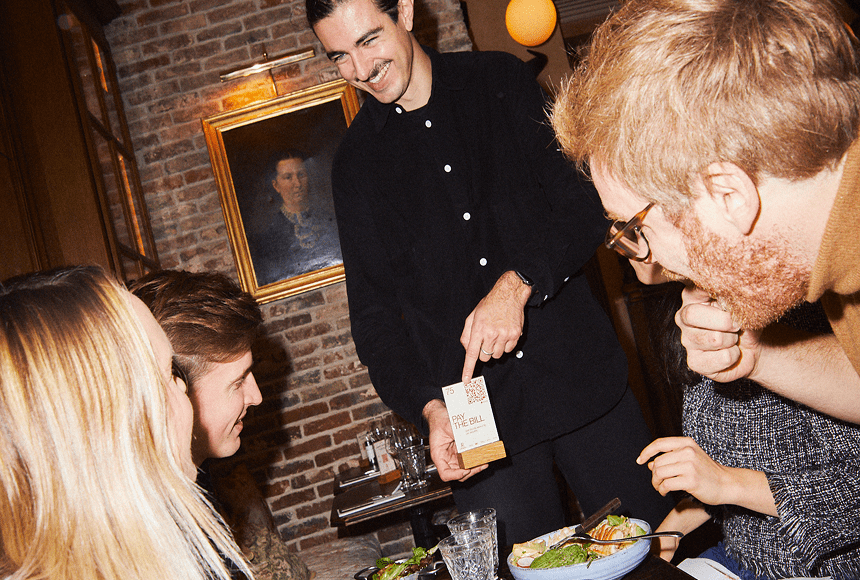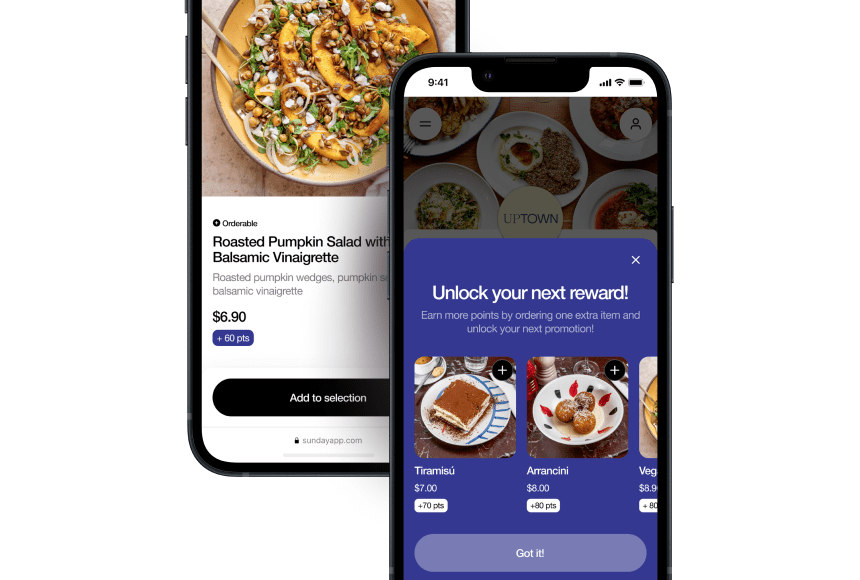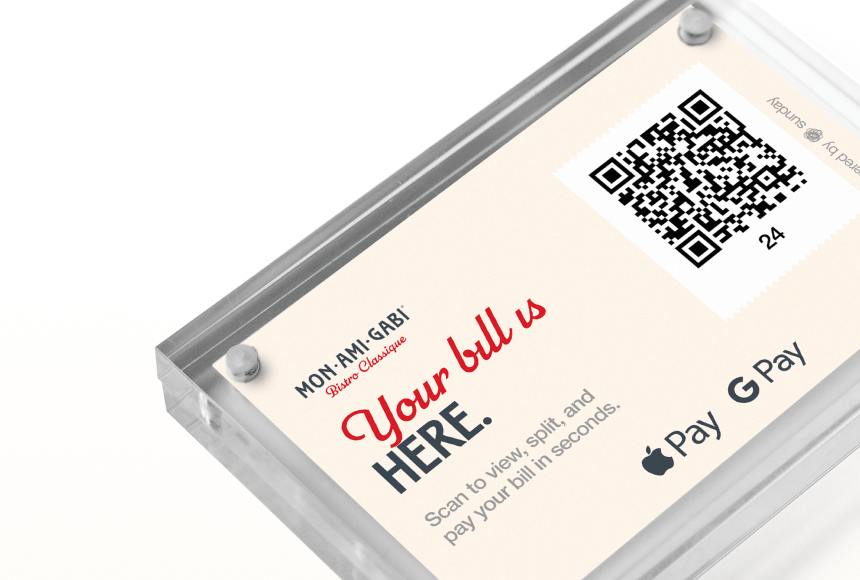
How Certain Eateries Miss Out on Positive Reviews’ Full Potential
The Surprising Paradox of Good Reviews That Don’t Convert
It’s an industry head-scratcher: a restaurant seems to do everything right—savory dishes, top-notch service, an appealing decor—and earns a string of positive reviews. Yet customers don’t flood through the doors in the numbers one might expect. How does a place with so many acclaimed dishes still remain off the radar of potential diners? Many of us in the hospitality world have seen this paradox firsthand. As a restaurant owner, you know how valuable positive reviews can be. They serve as an instant credibility boost and often carry more weight than any marketing campaign ever could.
In the United States, studies reveal that a whopping 94% of diners consult online reviews before deciding where to eat (Restaurant Business Online). This is not news to most owners—you know how crucial these platforms are. Still, even when your business has a shiny set of five-star feedback, you can struggle to see the corresponding impact in foot traffic and reservations. You may find yourself asking: why aren’t those excellent reviews driving more customers my way?
There’s a missing link between having glowing feedback and effectively turning that positivity into tangible benefits. It’s not enough to merely rack up favorable comments on Google or Yelp. Today’s digital environment favors an orchestrated approach—a mix of visibility, strategy, and engagement. When restaurants miss these steps, they can wind up with an impressive review average that just doesn’t translate into an equally impressive bottom line.
Hidden in Plain Sight: Your Visibility Problem
One of the most common reasons why some establishments don’t feel the power of their great reviews is they’re simply not easy to find online. Too often, restaurant owners assume that if their rating is good, customers will automatically discover them. While rating is an important factor, it’s only half the story.
Search engines prioritize various factors, from consistent business data to relevant keywords, to how often you engage with customers on platforms like Google Business Profile. A perfect 5-star rating is helpful, but if your restaurant doesn’t appear among the top search results, many potential guests won’t even see those beautiful reviews in the first place. In that sense, you might be an undiscovered gem—superb in quality but overshadowed by those with stronger digital footprints.
- Consistent Business Information: Ensure your hours, address, phone number, and menu links are up to date across all platforms. Inconsistent details can confuse both search engines and potential diners.
- Keyword Optimization: Think of what real guests type, such as “authentic pizza in Houston” or “best vegan bistro in Miami.” Tailor your Google Business description to match likely search queries.
- Regular Posting: Photos, updates, and events posted directly on your Google listing can boost visibility.
When your online presence is scattered, your stellar review average may go unnoticed. This is where you can consider leaning on digital tools. For instance, a modern payment solution that integrates feedback requests could gently prompt guests to leave reviews—and do so in a way that also improves your SEO footprint. A streamlined approach ensures your restaurant’s name pops up when a diner is in your vicinity and hungry for what you offer.
Failing to Leverage the Power of Response
Picture this: a guest leaves you glowing feedback, praising your “life-changing lobster linguine” and “warm, attentive service.” You read it, smile, and move on. From a purely operational standpoint, you might think nothing more needs to be done. After all, it’s already a good review—job well done, right?
But there is a subtle opportunity here: by responding to reviews, positive or otherwise, you send a powerful message that you care and are present for your guests online. This applies to negative reviews as well, but owners often overlook the opportunity in the good ones. Here’s why responding matters:
- Public Acknowledgment: Everyone sees you engage. It’s like greeting a regular the moment they walk in the door—publicly visible, welcoming, and personal.
- SEO Boost: Platforms like Yelp and Google often reward engaged business pages with slightly better ranking. Your response can include relevant keywords, gently nudging your restaurant’s visibility upward.
- Personal Connection: A heartfelt thank you reminds the reviewer—and everyone else reading—that behind the apron and the logo, a real person is running the show.
In other words, a missed response is a missed chance to confirm your brand’s personality. By replying to positive reviews with a short, genuine note, you convert a static statement into a dynamic conversation. Over time, these online interactions contribute to the restaurant’s reputation as active, caring, and worth visiting.
Misreading the Magic of Timing
Sometimes, the difference between an invisible review and a publicly shared one hinges on timing. We live in a fast-paced world where diners expect convenience at every step. They don’t just want an easy time ordering; they want an effortless path to leaving feedback, if they choose to do so.
This is precisely why solutions like QR-based payments followed by an automated review prompt can be so effective. If a guest is going to leave a review, they’re most inclined to do so in the immediate glow of a good meal. When it’s delayed—say they have to recall your restaurant name days later—motivation often wanes, and that well-intentioned five-star comment never materializes. Especially on busy evenings, diners want to settle the check quickly, leave a tip, and go on about their night. Providing a seamless digital pay-and-review path captures those fleeting, positive feelings right as they happen.
Conversely, restaurants without an efficient feedback funnel risk missing out on real-time raves and constructive insights. Even with perfect dishes, if the guest has to hunt down your place online (or type a lengthy URL from their receipt), the spark may fizzle. The simplest solutions offer an integrated final step: once the bill is settled, a polite nudge invites the customer to leave that scrumptious-lobster-linguine story for others to see.
Sweeping the Micro-Moments Under the Rug
We’re taught to pay attention to the big picture—reputation, foot traffic, repeat business. Yet often, success in the restaurant game is found in those little moments that shape the guest experience. A few slip-ups might seem minor in the grand scheme of things, but they can have outsized influence on how guests review you on Google, Yelp, or social media. Sometimes these micro-moments are extremely positive: a server overhears a birthday mention and surprises the table with a small dessert. Other times, they’re minor mishaps: a side dish served lukewarm or a host forgetting to greet a waiting guest.
These small details can overshadow an otherwise impeccable main course. You may collect more neutral three-star ratings because, despite praising your cuisine, guests mention the small inconveniences that made them think twice. For a new customer reading these reviews, those details might be enough to pick a competitor down the street.
Continuously training staff to spot and address micro-moments can translate to more consistently positive reviews, because a string of thoughtful gestures throughout the customer journey fosters loyalty. By guiding your team to anticipate challenges and turn potential pitfalls into special touches, you not only maintain quality but also cultivate the emotional sparkle that guests share in their reviews. With a bigger focus on these micro-moments, your great feedback will truly reflect a seamless and delightful experience, rather than a meal that was “good, but…”
The Dining Room vs. The Digital Realm: Connecting the Two
Let’s take another scenario: your restaurant’s customers consistently praise your food, atmosphere, and staff. They’re excited about your live music on Wednesday nights and your deep-dish pizza special on weekends. But how many of those positive experiences get carried over to visible online platforms? Often, the real-life spark of “This place is fantastic!” stops at the door. Building a bridge between the physical dining room and the digital realm can ensure that genuine word-of-mouth praise finds its way online.
One straightforward approach is making the feedback process part of your overall guest journey. That can look like:
- Subtle Invitations: Encourage happy diners to share their thoughts on popular review platforms with a small note at the bottom of the menu or table tent, or through a polite mention after they pay with a digital solution like a QR code.
- Staff Engagement: Train servers to incorporate a prompt naturally. For instance, when they sense a guest is genuinely impressed, they might say, “We’re so glad you enjoyed your meal! If you have a moment, we’d love to hear your feedback online—most of our new guests find us from reviews.”
- Email Follow-Ups: If you take reservations online, you can send a brief thank-you email to diners the next morning. Keep it genuine, short, and include a link to leave comments.
By actively connecting the offline and online worlds, you’re reminding guests—at those precise moments of satisfaction—that their voices matter. Think of it as making your own luck: rather than passively hoping that good reviews turn up, you proactively create the conditions for them to appear where future diners can see them.
The Underestimated Role of Google Reviews
For many owners, platforms like Yelp or TripAdvisor are top of mind. And while these are certainly valuable, ignoring Google Reviews might be a missed opportunity. Google is often the first place potential guests look. An updated, well-managed Google Business Profile (with photos, hours, menus, and a healthy stream of reviews) can have a dramatic impact on your restaurant’s discoverability.
Beyond discoverability, Google’s ecosystem is enormous. Directions, busy-time predictions, and ratings appear in search results and on Google Maps. A large volume of positive Google reviews boosts local rankings. If your five-star rating is buried in a platform’s subcategory, it won’t carry the same effect as an equally positive show on Google itself. The question is, how do you encourage more Google-based feedback?
One solution is integrated digital payment systems that encourage patrons to quickly post a Google review. For instance, you’ve likely seen solutions where a diner scanning a QR code to pay is then prompted to rate their experience and share feedback—seamlessly linked to Google. This gentle nudge at precisely the right moment (when the guest is already on their phone to pay) can make all the difference. Too many times, restaurants leave Google reviews up to chance. By making it convenient, you remain top-of-mind for diners who might otherwise forget.
When “Innovation” Overwhelms the Atmosphere
In your pursuit to win more reviews, it’s possible to become so tech-heavy that diners feel like they’ve landed in a Silicon Valley test lab instead of a cozy dining spot. Tablet ordering, automated lighting, and smartphone-based everything might be efficient—but go overboard, and you risk alienating guests who crave a personal touch. A restaurant is more than just a place to quickly get food; it’s an experience, a chance to relax, a momentary escape from the bustle. Technology should make service faster and more convenient, not robotic or impersonal.
Remember that genuine hospitality is still at the heart of positive reviews. If you push too many digital steps, you risk overshadowing the very ambiance that encourages a guest to leave a thoughtful comment. Here’s how to maintain the balance:
- Strategic Tech Placement: Use digital solutions that simplify, not complicate. A scanning payment solution that integrates tipping and a courtesy review prompt can be efficient while still respecting that face-to-face feel.
- Human Touch Points: Train your servers to remain attentive and personable. Even if ordering is done via tablet, a staff member can drop by to offer suggestions or simply wish someone a delightful evening.
- Seamlessness Over Showiness: Tech that’s noticeable only when you need it can keep your restaurant feeling warm and human. Avoid forcing guests through too many screens or complicated steps.
When used appropriately, digital tools—especially those that simplify the payment and feedback process—can enhance service without overshadowing hospitality. The result is an environment where customers feel cared for, thus more inclined to share a referral-worthy review.
Team Training: The Real Engine Behind Strong Reviews
You can have the best chef in town and an Instagram-worthy interior, but if your business lacks a unified, well-trained team, reviews can suffer regardless of how good the food tastes. Even with highly rated dishes, a single off-putting interaction with a server or host can trigger negative feedback.
Focused training does more than just enforce rules; it cultivates an atmosphere of anticipatory service. A well-orchestrated staff can read cues: a family with a restless child might quickly appreciate crayons or a small toy; a guest requesting water might prefer sparkling over still. These little gestures won’t always show up in a direct mention on Yelp, yet they leave behind a positive impression that guests often reflect in their star rating.
Moreover, training your staff to understand why reviews matter can be transformative. If the hostess knows that Google ratings significantly impact how many new reservations come in, she’ll likely be more enthusiastic about greeting each guest with genuine warmth. If servers are aware that good reviews often reference them by name, they might up their game to create memorable interactions with each table. Empower your staff with the knowledge that they’re not simply performing tasks; they’re co-creating an experience that guests will share with the world.
Tracking Your Progress (So You Don’t Fly Blind)
Knowing you have positive reviews is great, but do you track the metrics that measure their actual impact on your business? Are you monitoring foot traffic, analyzing new vs. repeat customers, or seeing if your average check size is going up? Restaurants that don’t link their reviews to tangible performance indicators might struggle to pinpoint what’s working—and what needs attention.
Keeping tabs on your reviews and linking them to sales data is no different than balancing your inventory. For instance, using an integrated system, you might observe that every time your restaurant gets five new 5-star reviews, you see a 5% uptick in reservation requests the following week. Or notice that a certain dish mentioned in reviews is driving more orders. When you see these patterns, you can double down on what’s already delighting your guests.
But if you never gather and analyze this information, you could be missing opportunities to boost your reputation or remedy small issues before they become big. There are free tools—like Google Analytics for your website or the built-in insights offered by Google Business Profile—that can show you how many people search for you, how often they click for directions, and other valuable data points. Pair these with in-house metrics so you can adjust your strategy and keep your reviews—and your business—on an upward trajectory.
The Subtle Marketing Missed in Casual Interactions
Even the most enthusiastic guests won’t always remember your restaurant name a week later, especially if they’re traveling or discovered you spontaneously. Casual interactions, such as a friendly chat about the dish they just enjoyed, are a prime opportunity to subtly reinforce your brand—helping them remember you when they get back home. A loyal local might become a repeat guest, while a visitor might become an online ambassador, praising your spot on social media.
How do you ensure that your name is remembered when they post about it? By maintaining consistent, clear branding and ensuring every customer walks away with something memorable—a sense of your story, a bit of your restaurant’s “why.” This doesn’t necessarily mean handing out merch or business cards. It can be as simple as mentioning, “We’re so happy you found us at Maple & Pine—our chef is from Maine, which explains the unforgettable lobster dishes. Hope to see you again soon!”
Additionally, if you do engage with social media, consider placing an unobtrusive handle or hashtag on receipts or signage, so anyone snapping a quick photo can easily find and tag you. These small details make it easier for satisfied guests to translate their excitement into digital content, further amplifying your reach. And the best part? They do it voluntarily, because they sense you’d genuinely appreciate their support.
Where to Look Next for Success
By now, you may see that earning high praise is only half the equation. It’s the delicate dance between garnering rave reviews and translating them into increased visibility, trust, and foot traffic that truly matters. In a world where the digital realm is critical, you can’t just post a few snapshots of your entrées and hope for the best. You need an integrated approach—one that embraces technology while honoring the timeless art of hospitality. Paying attention to the entire diner’s journey, from how they discover you online to how they pay and tip, can make your words on the web match the reality of your dining room.
Consider exploring solutions designed specifically to merge the online and offline experience. For example, a platform like sunday offers restaurants a frictionless way to handle payments with a QR code, prompt customers to tip, and seamlessly invite them to post a review—often on Google, where it counts most. This can significantly improve the number of reviews and their visibility. Meanwhile, you stay focused on what you do best: serving fantastic meals and orchestrating memorable experiences.
It’s not just about having good reviews; it’s about capitalizing on them—turning a stream of positive feedback into a steady flow of new and returning customers. Take time to ensure that the praise you’ve already earned works tirelessly on your behalf.
Frequently Asked Questions
How can I get more Google Reviews?
Encourage diners to share feedback while their enthusiasm is fresh. A QR code payment platform that directs guests to Google can simplify the process. Train your staff to gently remind satisfied patrons. If you take online reservations, send thank-you emails with a direct link to your Google listing.
What should I say when responding to positive reviews?
Keep it personal and genuine. A short, warm response—such as “Thank you for mentioning our lobster linguine! We’re thrilled you loved it and hope to serve you again soon”—goes a long way. Add small details that show you’re paying attention but avoid lengthy or overly formal messages that might sound canned.
How do I handle negative feedback without damaging my reputation?
A calm, empathetic response that acknowledges the issue and offers a way to resolve the problem can often turn things around. Other potential guests see that you care and engage constructively. Invite the customer to connect offline if needed, but do so without sounding dismissive or defensive.
Is it worth paying for online review management tools?
Some restaurants find value in tools that organize customer feedback and streamline responses. If you struggle to keep track of reviews across multiple platforms, it can be worthwhile. However, ensure the tool aligns with your workflow and doesn’t overcomplicate your operations. Focus on solutions that also help capture real-time reviews, such as integrated payment systems.
Find out more today
Drop us your details below and we’ll reach out within the next 24h
Stay on top of your online reputation.
Say goodbye to bad ratings and hello to 5*s. Get to know your customers with our integrated rating & review feature, which allows you to get more reviews, better ratings and more visibility online.




